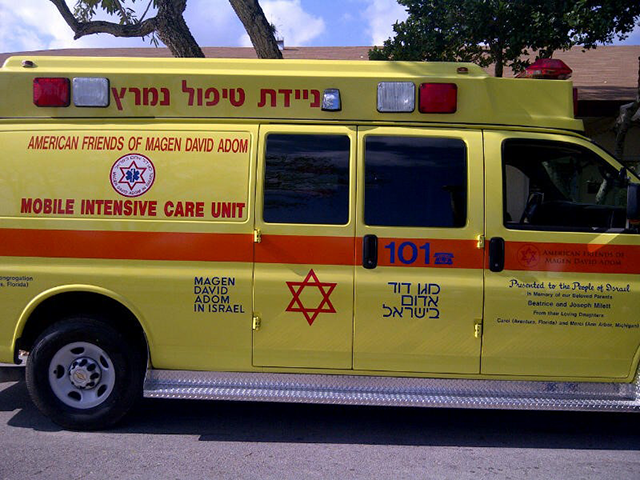Back in 2009, Carol Milett committed $150,000 as a bequest for lung cancer research to the American Committee for the Weizmann Institute of Science to honor her late husband. But then she had a change of heart. Why wait until she died?
“I decided he has always been in my heart and soul. I should do something now for Herb while I’m still alive,” she says.

Milett’s Ambulance Gift Sparked More Donations: “I continue doing what makes me feel good–giving does.”
Two things changed her mind. First, she saw how good it feels to see big gifts in action. After her parents died in 2012, she bought a $125,000 mobile intensive care ambulance for Israel’s Magen David Adom (its emergency medical service) in their memory. “I could see my ambulance and know it’s going wherever it’s needed most,” she says.
Then, the next year she turned 70 ½, the year you’re required to start taking minimum distributions from retirement accounts. Milett, now 73, lives comfortably in Aventura, Fla. on her teacher’s pension (she taught speech in the New York City public schools) and Social Security. She doesn’t need the distributions from her IRA, so she’s distributing the money directly to charities, including $18,000 a year to Weizmann. No waiting. Her support is made in the name of the Herbert L. Janowsky Lung Cancer Research Fund, and it’s up and running.
“I could start giving now and actually meet the scientists working on lung cancer,” Milett says. She took a trip to Israel with the Jewish National Fund and made a side trip to meet with Weizmann’s Dr. Tamar Paz-Elizur in her lab where she’s working on finding cancer solutions via DNA repair. “It was thrilling,” she says.
Milett’s giving strategy incorporates a tax-savvy move called the IRA charitable rollover. Congress made it permanent last December. It works like this: Once you reach 70 1/2 you can transfer up to $100,000 a year from your IRA directly to a public operating charity without that distribution counting as part of your adjusted gross income. Yet it does count toward the annual required minimum distribution you must take from a traditional IRA starting at the same age. You can’t double-dip and claim a charitable deduction for what goes directly from your IRA to charity. But if you don’t normally itemize deductions on your 1040, the rollover is a clear tax win. And even if you do itemize, a rollover might well save you more than taking the IRA distribution into income and then donating it because of sneaky tax code provisions.
Steve Meyers, a Weizmann fundraiser, encourages donors like Milett to look at IRA gifts to charity as part of a multi-year giving program. Instead of being thought of as one-off transactions, the IRA gifts can be treated by the charity as if they were the annual output of an endowed fund. Meyers calls this a “virtual endowment.”
Taking this idea further, Meyers says some donors name the charity as ultimate beneficiary of part or all of the IRA to establish an endowed fund. “You get impact and recognition now and assurance that your legacy grows and continues,” Meyers says. In Milett’s case, her annual IRA gifts will become a “true” endowment with gifts from her estate. She may use some of the remaining assets in her IRA to increase the impact of the gift to Weizmann and other Jewish charities. “Israel is my baby,” Milett says.
